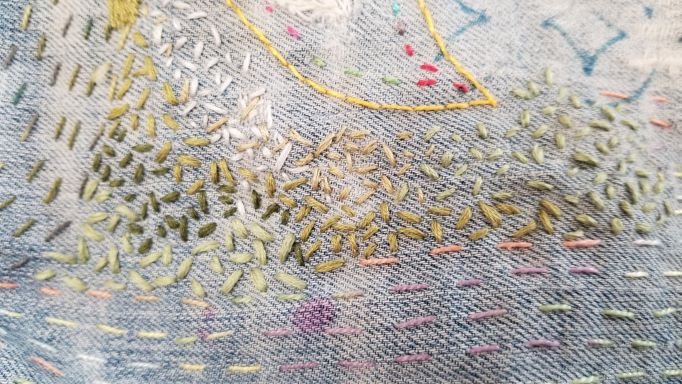Are you attracted to old rusty objects? I think many people are. Or is it that many people in my circle are also Baby Boomers, who are themselves becoming rusty objects? Hmmm.
Anyway, I'm attracted not only to the colors, patinas, patterns but the shapes of objects that have been around long enough to rust. Here in the Southwest USA, that means barbed wire, spirals and wheels from old mines, square headed nails and so many other old objects I can't even identify by name.
For years---yes, years!----I've held onto boxes of rusty metal finds that I've collected during Nard's and my travels, which I've tried and tried to figure out how to make them into art pieces that wouldn't just look like something from a weekend craft show booth.
Having reached the phase of life in which I'm more interested in diminishing than acquiring , last year I made a commitment to either do something definite with the boxes of rusty objects or get rid of them.
Rusty items as I prepare to bury them with an assortment of vintage textiles.
Harvesting my “crop!”
Aware of artists such as Canadian Caitlin Ffrench (@ffrench) who are distressing textiles with water and fire, I thought why not with soil? Our tomato garden area had long gone unused and so last spring (eek, a year ago already!) I got excited by the idea of “planting” my collection of vintage textiles (also sitting unused in a box) underneath rusty objects and our red Colorado dirt.
Work in Progress from “harvested” Rust Garden: “She’s Come Undone.”
Fall came and I “harvested” my “crops!”
In Progress: slow stitching on “Mending Mother Earth.”
I'm still working on what to do with my “new” materials, but I do have some observations and swirling thoughts about utilizing this decomposed cloth in my work to conceptualize humankind's degradation of Mother Earth.
The rust garden feels like I'm connecting with history and nature in tangible ways. These textiles have stories to tell, and by working with them, I'm connecting with that history in a very real way. When I buried the cloth and rusty objects, I allowed nature to take control of the outcome. Waiting to see what emerged months later gave honor to the power of nature, and to the importance of patience and surrender. The rust and soil, and I'm guessing rodents chewing on the cloth to create holes, created unexpected patterns and color variations that would be impossible to replicate through any other means.
This experiment has turned into a reminder that some things in life cannot be rushed or forced, and that the passage of time and the forces of nature can create something brilliant out of something seemingly ordinary.
The epitome of slow stitching! The tea towel is quite fragile. My interest is in preserving the chunks of dirt and sticks that adhered to the cloth during the 7 months’ it matured underground. I feel I am “suturing” and “splinting” Mother Earth, symbolic of the urgent need I feel as we approach yet another “Earth Day.”










